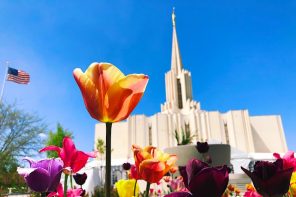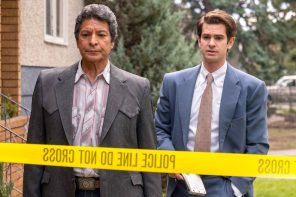I read with interest this week a column by Get Religion’s Terry Mattingly taking to task a Guardian UK religion blogger named Tresa Edmunds for using the word “worship” to characterize Catholic views of Mary in her article “Why Mormons Do Not Worship Mary.”
Edmunds, an observant Mormon feminist who regularly blogs about Mormonism, used Catholicism as a more familiar point of reference for comparing and contrasting Mormon views on the mother of Jesus Christ.
Mattingly, an Antiochan Orthodox religion journalist whose Get Religion blog “work[s] with the Oxford Centre for Religion and Public Life and a philanthropist… with the byline Roberta Green,” has made the criticism of minor usage errors a major concern as of late (Roberta Green is Roberta Green Ahmanson, who, along with her husband Howard Jr., is a significant donor to conservative Christian political causes). For their “sins” in using the term “worship” in place of the orthodox term venerate, Mattingly criticized Edmunds and the Guardian’s copy editors, calling them “ridiculous.”
But Mattingly’s piece reminded me of the day I sat in the back pew of a Catholic church on the eastside of Austin, Texas, with my friend Rose, who is Tejana and Catholic. Pointing to a gorgeous mural of a dark-skinned Virgin of Guadalupe that spanned the cathedral chancel, Rose smiled at me conspiratorially and said, “I bring my kids here to see God as a big, brown-skinned woman.”
Don’t tell Rose that she doesn’t worship Mary, or that she doesn’t “get” Catholicism, as heretical as her feminist Tejana take on it might be.
It’s worth asking the question of what it really means to “get religion.” Religion scholars long ago acknowledged two valid perspectives on religious experience: one that focuses on religious institutions, their policies, their projects, and the “official” story, and another that focuses on the way religion is lived everyday in “unofficial” yet very real ways by common people of faith.
Mattingly clearly cares about promoting precise descriptions of orthodox institutional religious doctrines and policies. But that doesn’t mean that he “gets religion” any better than the rest of us who report from the pews at the back of the worship hall, or from all of the unauthorized places—homes, schools, street corners, campuses, government—where religion wields major power.
A few weeks ago, Mattingly criticized RD for running my story on a recently-installed, openly-gay Mormon congregational leader in San Francisco. Get Religion insisted that this story on Mitch Mayne wasn’t really news, and that it was bad journalism to claim that Mayne’s call to serve indicated “evolving” views of homosexuality in Mormonism, because only orthodox institutional statements from high-ranking Church leaders count as evidence.
But as someone who’s been writing about Mormonism and homosexuality for 20 years, since I was an undergraduate at Brigham Young University, I stand by my observation that Mormon views on homosexuality are changing.
You may or may not hear that evolution if you only listen to the speech of high-ranking LDS Church officials. Thirty-five years ago, LDS Church leader Elder Boyd K. Packer stood at the pulpit during a worldwide Mormon conference and related how he once congratulated a Mormon missionary for assaulting his missionary companion after a perceived homosexual advance. Last fall, at a worldwide LDS conference, Elder Packer delivered another controversial talk on homosexuality that led LDS PR officials to issue a statement affirming that the Church unequivocally decries anti-gay violence. (Other high-ranking LDS Church leaders have demonstrated changing views of homosexuality, as the LDS blogger Kaimi Wenger carefully documents here.)
You will, however, hear significant changes in the way more than a few rank-and-file Mormons talk about homosexuality. Read the words of the churchgoing LDS women who spoke last week at a Salt Lake City vigil against gaybashing. These women don’t have high-ranking positions in LDS institutional life. They don’t make doctrine or policy. Very, very few women in Mormonism actually do. But they speak for an increasing number of everyday Mormons who know that gay people are our relatives. Family. Saints. Us.
Are views on homosexuality evolving in Mormonism? You bet, and like so many changes in the history of religion, that change may be coming from the people in the back pew or at the bottom of the hierarchy.
And so long as it focuses on defending orthodox institutional points of view, that’s one story Get Religion may never get.




